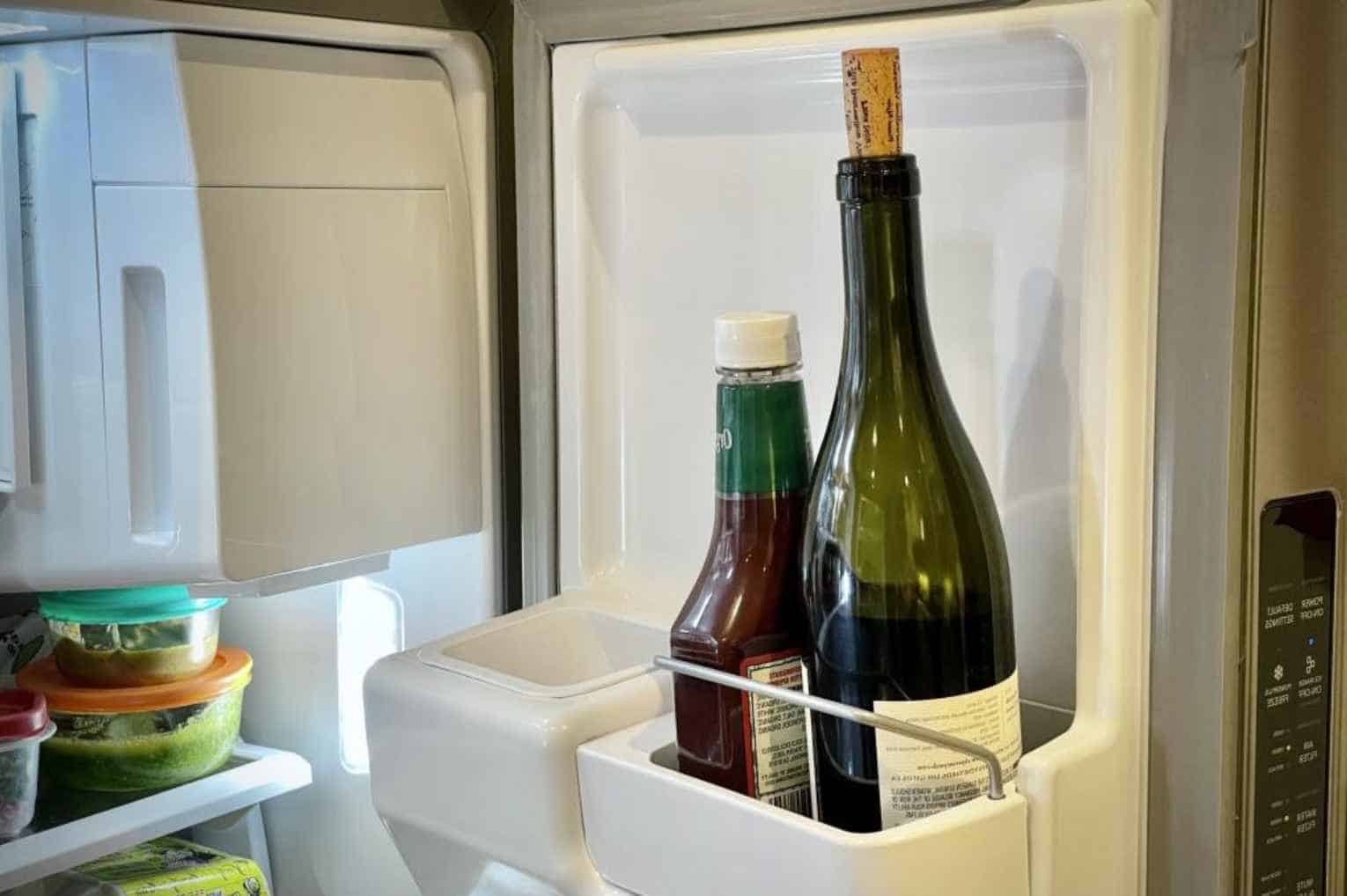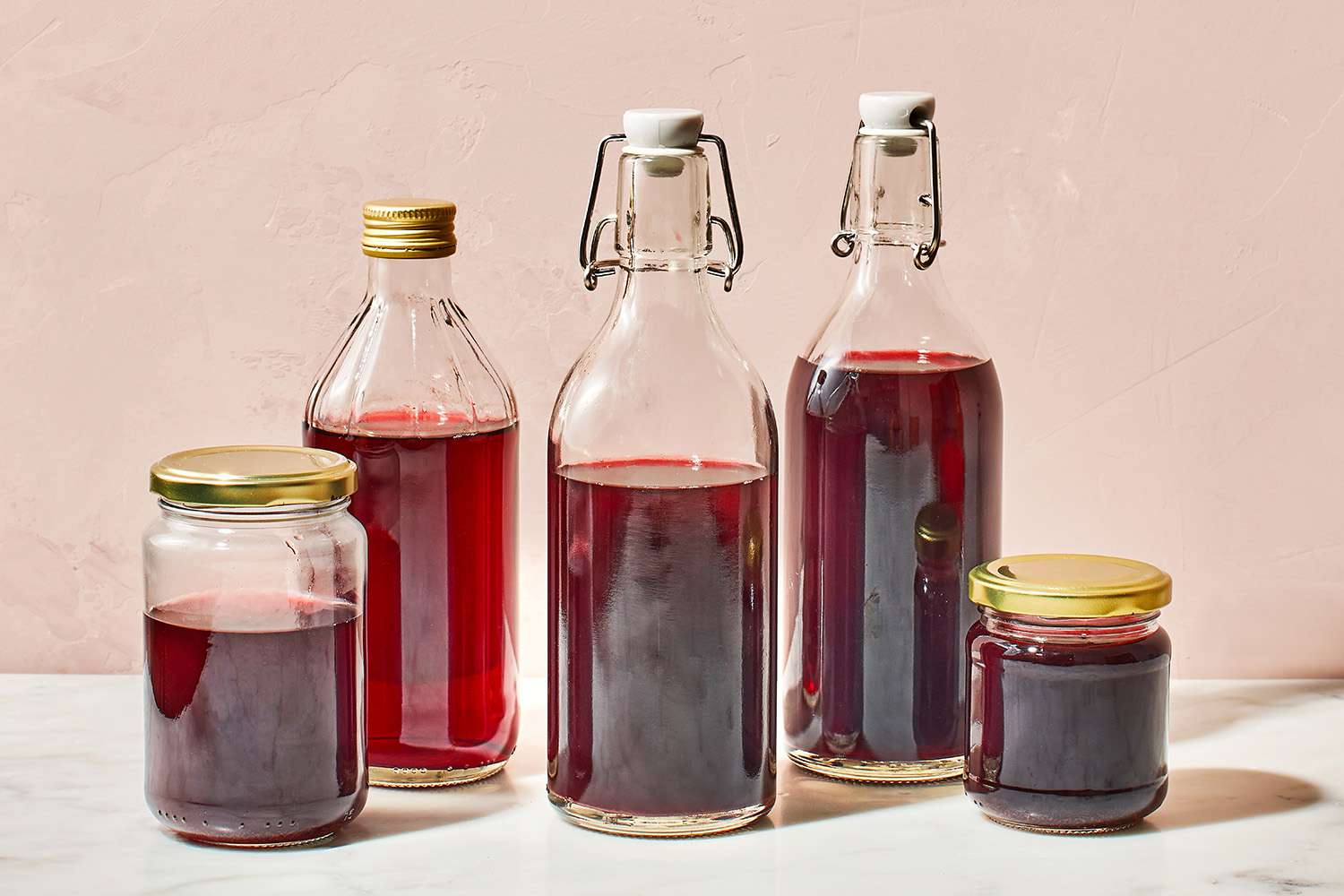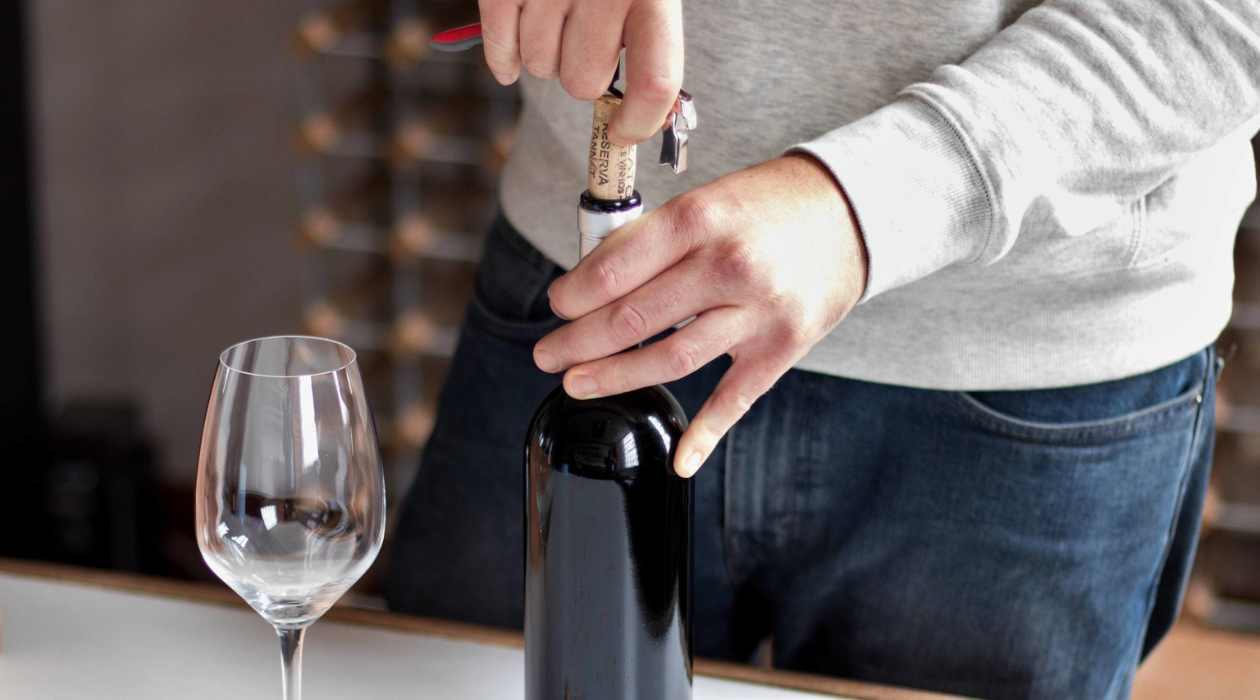

Articles
How To Store Port Wine After Opening
Modified: February 3, 2024
Learn how to properly store port wine after opening to preserve its flavor and quality. Read our informative articles for expert tips and guidance.
(Many of the links in this article redirect to a specific reviewed product. Your purchase of these products through affiliate links helps to generate commission for Storables.com, at no extra cost. Learn more)
Introduction
Welcome to the world of port wine! Whether you’re a seasoned connoisseur or just starting to explore the joys of this fortified wine, one thing is certain – proper storage is key to preserving its rich flavors and aromas.
Port wine, also known as Porto, is a unique and beloved wine produced in the Douro Valley of northern Portugal. It is crafted by fortifying red wine with a neutral grape spirit, creating a sweeter and higher-alcohol beverage. The result is a delectable drink that is often enjoyed as a dessert wine.
Unlike regular table wines, port wine has a longer lifespan once opened. This is due to its higher alcohol content and the fortification process, which helps to preserve its flavors and prevent oxidation. However, it’s still crucial to handle and store port wine properly after opening to ensure its quality remains intact.
In this article, we will discuss the importance of proper storage for port wine and provide you with several methods to store it after opening. By following these guidelines, you can extend the lifespan of your port wine and continue to savor its delightful characteristics for weeks or even months to come.
Key Takeaways:
- Proper storage of port wine is essential to maintain its flavors and aromas. Methods such as recorking, vacuum sealing, and transferring to smaller bottles can extend the wine’s lifespan and preserve its quality.
- Storing port wine in a wine refrigerator or using a wine preserver are effective long-term storage options. Minimizing oxygen exposure and maintaining proper organization are key to preserving the wine’s quality.
Read more: How To Store Opened Port Wine
Understanding Port Wine
Before we delve into the intricacies of storing port wine, let’s first understand what makes this wine so special. Port wine is produced from a blend of indigenous grape varieties such as Touriga Nacional, Touriga Franca, Tinta Roriz, and Tinta Barroca. The grapes are grown in the Douro Valley region, which boasts a unique microclimate and diverse terroir that contribute to the wine’s distinct flavors.
Port wine is typically categorized into two main styles: Ruby and Tawny. Ruby port is known for its vibrant red color and fruity flavors, while Tawny port is aged in wooden barrels, resulting in a more nutty and caramel-like taste. Both styles have their own charm and are enjoyed by port wine enthusiasts around the world.
One of the defining characteristics of port wine is its higher alcohol content, ranging from 18% to 20%. This not only gives the wine a richer and fuller body but also acts as a natural preservative. Additionally, port wine is often sweet, owing to the residual sugars left after the fermentation process.
It’s important to note that unlike regular table wines, port wine undergoes a fortification process during production. This involves adding a neutral grape spirit, typically brandy, to halt the fermentation process and preserve the wine’s natural sweetness and richness. The fortification process also contributes to the higher alcohol content found in port wine.
Now that we have a better understanding of what makes port wine unique, let’s explore why proper storage is crucial to maintain its quality and ensure it continues to deliver a delightful sensory experience.
Why Proper Storage is Important
Proper storage of port wine after opening is essential to maintain its quality and prevent the wine from deteriorating over time. There are several key reasons why you should pay attention to how you store your precious bottle of port:
- Prolonging the Shelf Life: While port wine has a longer shelf life compared to regular table wines, it is still susceptible to degradation over time. By storing port wine properly, you can extend its freshness and preserve the rich flavors and aromas for an extended period.
- Maintaining Aroma and Flavor: Port wine is known for its complex aromas and flavors that develop over time. Proper storage ensures that these characteristics are preserved, allowing you to fully enjoy the nuances and depths of the wine each time you indulge in a glass.
- Preventing Oxidation: Oxidation is the enemy of wine, causing it to lose its vibrant flavors and turn stale. By storing port wine in a way that minimizes exposure to oxygen, you can help prevent oxidation and maintain the wine’s freshness and vitality.
- Preserving Sweetness and Balance: Port wine’s natural sweetness is a prized aspect of its taste profile. Proper storage prevents the wine from becoming overly sweet or losing its balance, ensuring that each sip delights your palate.
- Saving Money: By storing port wine correctly, you can avoid wasting unfinished bottles and save money in the long run. Instead of having to discard spoiled wine, you can enjoy it over time without compromising on quality.
Now that you understand the importance of proper storage, let’s dive into the various methods you can employ to store your opened bottle of port wine, maintaining its integrity and preserving its unique characteristics.
Steps to Store Port Wine After Opening
After opening a bottle of port wine, it’s crucial to take certain steps to ensure its longevity and maintain its quality. Here’s a step-by-step guide on how to store your port wine:
- Recork the Bottle: As soon as you’ve poured the desired amount of port wine, recork the bottle tightly to minimize the wine’s exposure to oxygen. This will help prevent oxidation and preserve its flavors.
- Store in a Cool, Dark Place: Port wine is best stored in a cool, dark place away from direct sunlight and heat sources. Excessive exposure to light and heat can accelerate the aging process and compromise the quality of the wine.
- Avoid Temperature Fluctuations: Rapid temperature changes can negatively impact the flavors and aromas of port wine. Ensure that the storage location has a consistent temperature to maintain the wine’s stability.
- Keep the Bottle Upright: Unlike regular wines, which are typically stored horizontally, it’s best to store port wine upright. This helps prevent the wine from coming into prolonged contact with the cork, reducing the risk of cork taint or leakage.
- Consider Humidity Levels: While port wine is less sensitive to humidity compared to other wines, it’s still beneficial to store it in an environment with moderate humidity levels. This helps prevent the cork from drying out, maintaining a proper seal.
- Minimize Vibrations: Vibrations can disturb the sediment in port wine, affecting its clarity and taste. Avoid storing the bottles near appliances or areas with frequent vibrations to preserve the wine’s integrity.
- Track the Date: Lastly, it’s helpful to label the bottle with the date it was opened. This allows you to keep track of how long the port wine has been stored and make an informed decision about its consumption.
By following these steps, you can ensure that your opened bottle of port wine remains in optimal condition, ready to be enjoyed whenever you’re in the mood for a glass of this delightful beverage.
Option 1: Recorking Method
The simplest and most straightforward method to store an opened bottle of port wine is the recorking method. This method involves tightly recorking the bottle to minimize exposure to oxygen and preserve the wine’s freshness. Here’s how to properly recork your port wine:
- Clean the Bottle Opening: Before recorking, ensure that the bottle opening is clean and free from any wine residue. This will help create a tight seal and prevent any contamination.
- Pour the Desired Amount: Pour out the desired amount of port wine, leaving enough space at the top of the bottle for the cork.
- Wipe the Neck and Cork: Use a clean cloth or napkin to wipe the neck of the bottle and the cork. This will remove any moisture or residue, ensuring a proper seal.
- Insert the Cork: Place the cork firmly into the bottle opening, applying gentle pressure to create a tight seal. Ensure that the cork is inserted all the way in, preventing any air from entering the bottle.
- Store the Bottle Properly: Once recorked, store the bottle in a cool, dark place, away from direct sunlight and heat sources. Following the steps mentioned earlier for proper storage will help maintain the quality of the port wine.
The recorking method is a simple yet effective way to store port wine after opening. By minimizing exposure to oxygen, you can preserve the flavors and aromas of the wine and extend its shelf life. However, keep in mind that this method is suitable for short-term storage, typically up to a week or two. If you plan to store the port wine for a longer duration, you may want to consider alternative methods such as vacuum sealing or transferring the wine to smaller bottles.
Read more: How To Store Port Wine Once Opened
Option 2: Vacuum Sealing Method
The vacuum sealing method is an excellent option for storing opened bottles of port wine for a longer duration. By removing the excess air from the bottle, this method helps maintain the wine’s freshness and prevents oxidation. Here’s how to use the vacuum sealing method to store your port wine:
- Pour the Desired Amount: Pour out the desired amount of port wine from the bottle, leaving enough space at the top for the vacuum seal. Ensure that the bottle opening is clean and free from any wine residue.
- Place the Stopper: Insert a vacuum stopper into the bottle opening. These stoppers are specifically designed to create an airtight seal when used with a vacuum pump system.
- Attach the Vacuum Pump: Attach the vacuum pump to the stopper, ensuring a secure connection. Some vacuum pumps are manual, requiring you to pump the air out manually, while others are electric, making the process even easier.
- Remove the Air: Activate the vacuum pump to remove the air from the bottle. This creates a vacuum seal, minimizing the wine’s exposure to oxygen and preserving its flavors and aromas.
- Store the Bottle Properly: Once the vacuum seal is created, store the bottle in a cool, dark place, away from light and heat. This method is effective in extending the shelf life of the port wine for several weeks or even months, depending on the quality of the vacuum seal.
- Release the Vacuum Seal: When you’re ready to enjoy the remaining port wine, simply release the vacuum seal by pressing a button or releasing a valve on the stopper. This allows you to easily remove the stopper without any hassle.
The vacuum sealing method is a reliable way to store opened bottles of port wine, as it creates a nearly oxygen-free environment, significantly slowing down the wine’s oxidation process. This method is particularly useful if you plan to store the port wine for an extended period or if you want to preserve the wine’s freshness after opening.
Store opened port wine in a cool, dark place, away from direct sunlight and heat. Use a vacuum pump to remove excess air from the bottle and reseal it with the original cork or a wine stopper to help preserve its flavor.
Option 3: Transfer to Smaller Bottles
If you have opened a larger bottle of port wine and want to store it for an extended period, transferring the wine to smaller bottles can be an effective method. By reducing the wine’s exposure to oxygen, this method helps preserve its flavors and aromas. Here’s how to transfer port wine to smaller bottles:
- Select Smaller Bottles: Choose smaller, clean glass bottles with airtight closures, such as screw caps or cork stoppers. Make sure the bottles are sterilized and free from any residue or odors.
- Sanitize the Bottles: Clean and sanitize the smaller bottles thoroughly. Rinse them with hot water and use a mild detergent to remove any impurities. Rinse again with hot water to ensure all detergent residue is removed.
- Pour the Wine: Carefully pour the port wine from the original larger bottle into the smaller bottles. Leave some space at the top of each bottle to accommodate the cork or screw cap.
- Seal the Bottles: Securely seal each smaller bottle with airtight closures. If using cork stoppers, ensure they are inserted firmly and create a tight seal. For screw caps, twist them on tightly.
- Label the Bottles: Label each smaller bottle with the date of transfer and any other relevant information, such as the type of port wine and vintage. This will help you keep track of the aging process.
- Store the Bottles Properly: Place the sealed bottles in a cool, dark place, away from light and heat sources. Following the recommended storage conditions for port wine will help maintain the wine’s quality.
- Consider Serving Sizes: When transferring to smaller bottles, consider your serving preferences. If you typically enjoy a glass or two at a time, transfer the wine into smaller bottles that reflect your desired serving size.
By transferring the port wine to smaller bottles, you can reduce the wine’s exposure to oxygen and minimize the risk of oxidation. This method is particularly useful if you have a larger bottle and want to store the remaining wine for a longer period while ensuring its quality remains intact.
Option 4: Use a Wine Preserver
Using a wine preserver is a convenient and effective method to store opened bottles of port wine. Wine preservers create a barrier between the wine and oxygen, helping to maintain its freshness and flavors. Here’s how to use a wine preserver to store your port wine:
- Pour the Desired Amount: Pour out the desired amount of port wine from the bottle, leaving enough space at the top for the wine preserver.
- Clean the Bottle Opening: Ensure that the bottle opening is clean and free from any wine residue. This will help create a tight seal with the wine preserver.
- Insert the Wine Preserver: Depending on the type of wine preserver you have, follow the manufacturer’s instructions to insert it into the bottle. This may involve placing a stopper or cap on the bottle.
- Activate the Preservation: Activate the wine preserver according to the instructions provided. This may involve pumping air out of the bottle or injecting inert gas, such as argon or nitrogen, into the bottle to create a protective layer.
- Store the Bottle Properly: Once the wine preserver is activated, store the bottle in a cool, dark place, away from light and heat. The wine preserver will help maintain the wine’s freshness and flavors for an extended period.
- Remove the Wine Preserver: When you’re ready to enjoy the remaining port wine, simply remove the wine preserver according to the manufacturer’s instructions. This allows you to easily access the wine without compromising its quality.
Wine preservers are an excellent investment for wine enthusiasts who often have opened bottles that need to be stored. They provide a reliable method to protect the wine from oxidation and maintain its taste and aroma. Make sure to follow the instructions provided with your wine preserver for the best results.
Option 5: Store in the Fridge
Storing opened bottles of port wine in the refrigerator is a simple and effective method to prolong its freshness. The cool temperature of the fridge slows down the oxidation process and helps preserve the flavors and aromas of the wine. Here’s how to store port wine in the fridge:
- Pour the Desired Amount: Pour out the desired amount of port wine from the bottle, leaving some room at the top to prevent spillage when the bottle is stored horizontally.
- Recork or Seal the Bottle: Recork the bottle tightly or use an airtight wine stopper to prevent air from entering the bottle. This will help maintain the wine’s freshness and prevent it from absorbing any unwanted odors from the fridge.
- Store the Bottle Horizontally: Place the tightly sealed bottle horizontally in the fridge. This position keeps the wine in contact with the cork, preventing it from drying out and maintaining a proper seal.
- Keep Away from Strong Odors: Avoid storing the bottle near strong-smelling foods in the fridge, as the wine can absorb their odors. Place the bottle in a section of the fridge where it won’t be affected by other food items.
- Monitor the Temperature: Make sure the fridge temperature is set at a suitable level, ideally around 55°F (12.8°C) for port wine storage. Fluctuations in temperature can affect the quality and taste of the wine.
- Store for Short-Term Storage: Storing port wine in the fridge is best for short-term storage, typically up to a week or two. If you plan to store the wine for a longer period, consider alternative methods such as vacuum sealing or transferring to smaller bottles.
Storing port wine in the fridge is a convenient option that helps maintain its freshness and flavors for a short period. It’s important to note that the cold temperature of the fridge can slightly impact the taste of the wine. Therefore, it is recommended to allow the wine to come to room temperature before serving to fully enjoy its complex flavors.
Read more: How To Store Port Wine
Option 6: Store in a Wine Refrigerator
If you’re a serious wine enthusiast and frequently enjoy port wine, investing in a wine refrigerator is an excellent option for long-term storage. A wine refrigerator provides optimal temperature and humidity control, ensuring that your opened bottles of port wine stay in pristine condition. Here’s how to store port wine in a wine refrigerator:
- Select a Wine Refrigerator: Choose a wine refrigerator that meets your storage needs and fits your available space. Look for a model that offers temperature and humidity control, as well as adjustable shelving to accommodate different bottle sizes.
- Set the Ideal Temperature: Adjust the temperature of the wine refrigerator to the ideal range for preserving port wine, which is around 55°F (12.8°C). This temperature helps slow down the aging process and maintains the wine’s flavors and aromas.
- Consider Humidity Levels: Ensure that the wine refrigerator maintains a moderate humidity level, ideally between 50% and 70%. This prevents the corks from drying out and minimizes the risk of air infiltration.
- Organize the Bottles: Arrange the bottles of port wine in the wine refrigerator, ensuring they are stored horizontally. This keeps the wine in contact with the cork, maintaining its moisture and a proper seal.
- Limit Vibrations: Avoid placing the wine refrigerator near appliances or areas with excessive vibrations. Vibration can disturb the sediments in the wine and affect its taste and appearance.
- Label and Track the Bottles: Label each bottle with the date it was opened and any other relevant information, such as the type of port wine and vintage. This helps you keep track of the aging process and make informed decisions about which bottles to enjoy first.
- Monitor the Wine Refrigerator: Regularly check the temperature and humidity levels of the wine refrigerator to ensure they remain consistent. Make any necessary adjustments to maintain the optimal storage conditions for your port wine.
A wine refrigerator provides the ideal environment for storing opened bottles of port wine, giving you the peace of mind that your collection is properly protected. With precise temperature control and proper humidity levels, a wine refrigerator helps preserve the wine’s quality and flavor profile, allowing you to enjoy it at your leisure.
Tips for Long-Term Storage
If you’re looking to store your opened bottles of port wine for an extended period, here are some valuable tips to ensure the wine remains in optimal condition:
- Maintain the Proper Storage Conditions: Regardless of the storage method you choose, it’s essential to maintain the recommended storage conditions for port wine. Store the bottles in a cool, dark place with a consistent temperature, away from light, heat, and temperature fluctuations.
- Minimize Oxygen Exposure: Oxygen is the enemy of wine, so it’s crucial to minimize its exposure. Recork the bottle tightly or use a wine preserver to create a barrier between the wine and air. This will help prevent oxidation and preserve the wine’s flavors and aromas.
- Consider Using Wine Cellars: If you’re a dedicated wine enthusiast with a collection of port wine, investing in a wine cellar or renting wine storage space can be an excellent long-term storage option. Wine cellars provide consistent temperature and humidity control, ensuring that your bottles age gracefully.
- Prioritize Proper Organization: Keep your collection organized by labeling each bottle with important information such as the date it was opened, the type of port wine, and the vintage. This helps you easily track and access the wines when you’re ready to enjoy them.
- Rotate the Bottles: If you have multiple bottles of opened port wine, consider implementing a rotation system. Consume wines that have been stored the longest first to ensure you enjoy them at their peak freshness.
- Keep Detailed Records: Maintain a record of your port wine collection, including purchase dates, tasting notes, and storage conditions. This can be helpful for tracking the wines’ aging process and understanding how they evolve over time.
- Be Mindful of Salting: Some wine enthusiasts claim that placing a small amount of salt on the cork can help improve its seal. However, this practice is controversial, and its effectiveness is debated. It’s best to consult with a wine expert before attempting this method.
- Regularly Check for Spoilage: Periodically inspect your stored port wine for any signs of spoilage, such as cork leakage or unpleasant odors. If you notice any issues, consider consuming the wine sooner rather than later to avoid further deterioration.
By following these tips, you can ensure that your opened bottles of port wine remain in excellent condition for the long term. Proper storage, minimal oxygen exposure, and careful organization are the key factors in preserving the wine’s quality, allowing you to savor its delightful flavors and aromas whenever you choose.
Conclusion
Proper storage of opened bottles of port wine is crucial to preserve their flavors and maintain their quality over time. Whether you’re a casual wine enthusiast or a serious collector, there are several options available to ensure that your port wine remains fresh and enjoyable:
Recorking the bottle is a simple and effective method for short-term storage, while using a wine preserver creates an airtight seal, extending the lifespan of the wine. Transferring port wine to smaller bottles or storing it in a wine refrigerator are excellent options for long-term storage, providing the ideal temperature and humidity conditions. For short-term storage, storing the bottle in the refrigerator can help maintain its freshness.
When it comes to storing port wine, remember to minimize oxygen exposure, maintain consistent storage conditions, and choose a method that suits your needs and preferences. Labeling and organizing your collection will help you keep track of your wines’ aging process.
Whether you’re enjoying a glass of port wine as a dessert or savoring it during special occasions, following proper storage techniques will ensure that the wine delivers its full range of delightful flavors and aromas.
So, raise a glass to the art of storing port wine properly, and savor the richness and complexity of this beloved drink for weeks, months, or even years to come.
Frequently Asked Questions about How To Store Port Wine After Opening
Was this page helpful?
At Storables.com, we guarantee accurate and reliable information. Our content, validated by Expert Board Contributors, is crafted following stringent Editorial Policies. We're committed to providing you with well-researched, expert-backed insights for all your informational needs.














0 thoughts on “How To Store Port Wine After Opening”